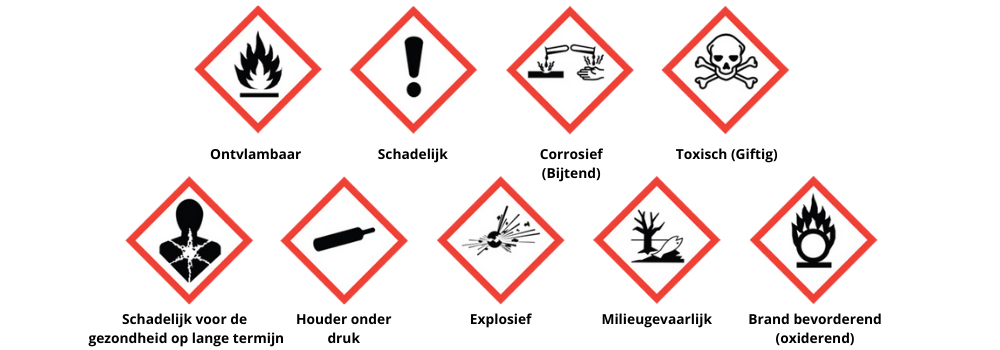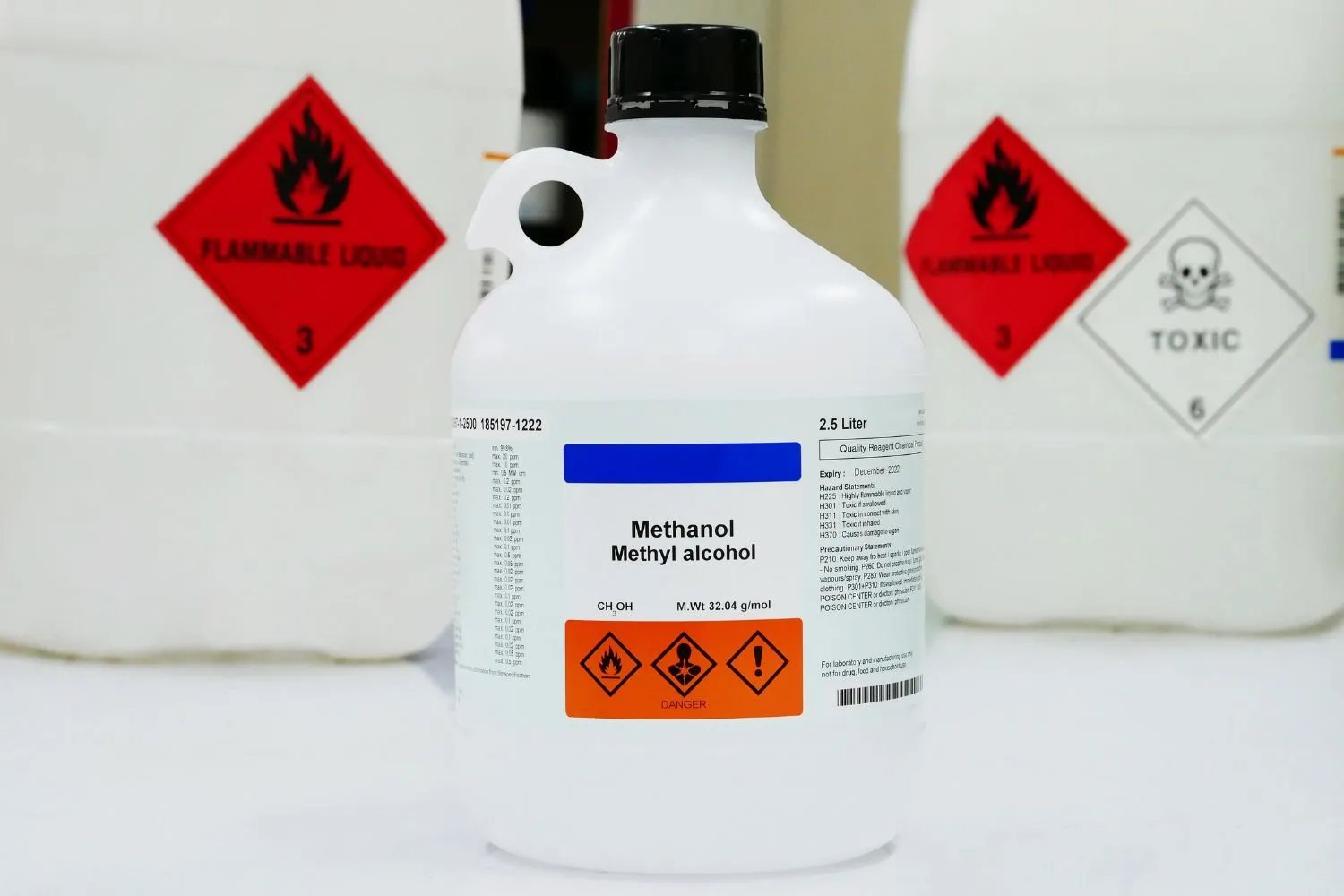In this blog post, we provide you with a basic overview of safety labeling. If you want a detailed explanation of how to apply the rules, we refer you to the handbook for safety labeling from ECHA.
The Globally Harmonised System of Classification and Labelling of Chemicals, or GHS for short, is an international way of classifying, characterizing, and labeling chemical substances and mixtures. The reason for an internationally uniform system is to ensure that indications and information about hazardous substances are the same everywhere in the world. This means that a substance classified as dangerous in the Netherlands is also seen as such internationally.

The GHS has 9 labels to clearly indicate the hazards of a product. These labels are warning symbols of the hazard category in which the product is placed and are further described using H statements.

H statements, also known as hazard statements or danger statements, are phrases that indicate the dangers of a product based on the CLP regulation (Classification, Labelling and Packaging). For example, when a substance is labeled with GHS02-Flammable, this can be further clarified by the phrase H225 "Highly flammable liquid and vapor". This phrase clearly indicates what the danger of the substance is and H225 means the same thing in every language in the list of H statements.
Europe also makes use of EUH statements, which are hazard statements that are only applicable in Europe.
It is mandatory to display H statements at the following points:
There are 2 types of signal words: warning and danger. The signal word depends on the severity of the danger of the substance. Thus, the phrase "H227 - Combustible liquid" would have the signal word "Warning", but a higher hazard category like "H224 - Extremely flammable liquid and vapor" would have the signal word "Danger".
P statements, also known as precautionary statements or precautionary measures, are phrases that inform which precautionary measures you should take based on the hazards mentioned in the H statement. P statements thus have a direct relationship with the H statements. For example, for the phrase "H225 - Highly flammable liquid and vapor", the precautionary measure "Keep away from heat/sparks/open flames/hot surfaces. — No smoking." would be stated. A hazard statement can have multiple precautionary measures depending on the severity of the danger. Just like the H codes, the P codes have the same meaning in every language.
These precautionary statements are divided into the following 5 categories
It is mandatory to display P statements at the following points:
We recommend also listing the P statements online to inform the consumer as good as possible about the precautionary measures that must be taken for the use of the product.

For some products, it may be the case that a product does not have a hazard label, but does have H statements. For example, a substance that has the statement H227 (Combustible liquid) does not need to show a GHS02-Flammable label on the label because the product is in the lowest category of flammable liquids. Therefore, make sure that these products are also correctly described on your website to inform customers about the dangers.
Do you want to share all this information on your site in an easy, stylish, and time-saving manner? Then try the Veiligvertoon plugin for WordPress. With this, you can display products in the correct manner in no time.